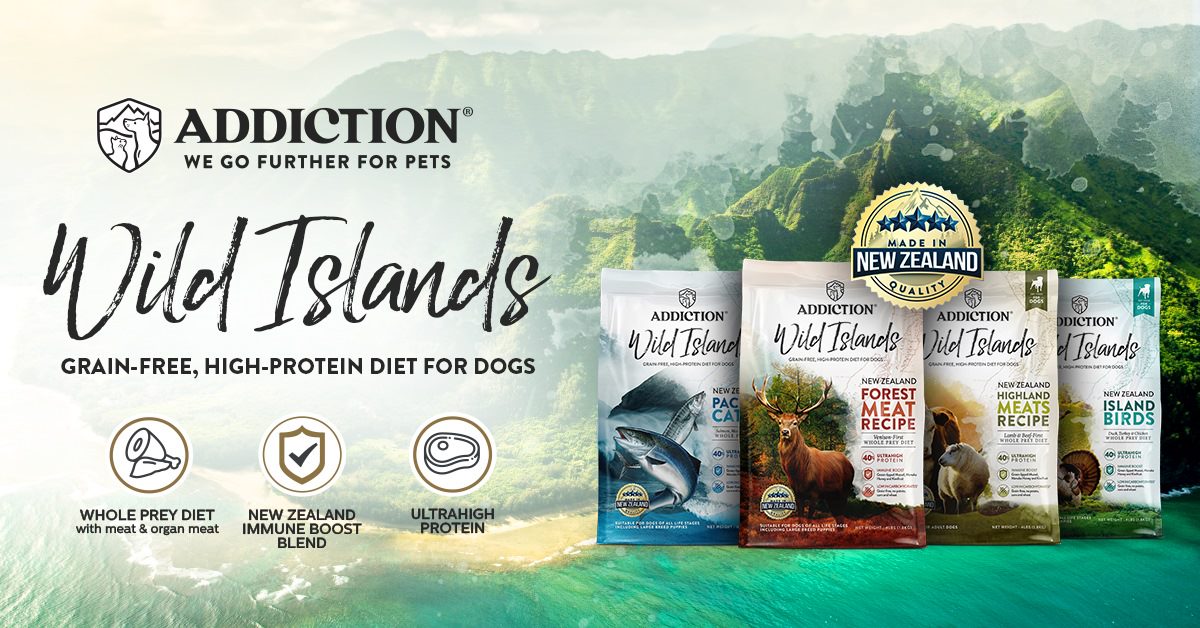Choosing the Right Dog Food for Your Dog at All Lifestages

Food is one of the basic needs of dogs. With domestication, it is now the responsibility of pet owners to provide a nutritionally-balanced diet that will meet a dog’s daily requirements for basic nutrients and calories.
The pet food industry is not strictly regulated. But the Association of American Feed Control Officials (AAFCO) have established laws, regulations, and policies that are considered recommended standards for pet food manufacturing and everything related to pet foods and nutrition.
When buying pet food, pet owners should make sure that the product label contains the AAFCO nutrition claim or the Nutritional Adequacy Statement which is actually “a statement that indicates the food is complete and balanced for a particular life stage, such as growth, reproduction, adult maintenance or a combination of these, or if the food does not meet the complete and balanced requirements than it is intended for intermittent or supplemental feeding only.”
When is pet food considered “complete and balanced”?
There are three ways by which pet food can be considered “complete and balanced”.
- It must meet the nutrient profiles that are specified by AAFCO. Pet food that is formulated for a specific life stage should have every nutrient needed based on the nutritional recommendations of AAFCO and the National Research Council (NRC) for cats and dogs.
- The product has undergone animal feeding trial based on the AAFCO feeding protocols.
- When it is established to be nutritionally similar to the lead product member of a pet food. This means that the product being tested meets specific nutrient and calorie criteria of the lead product.
Pet foods that are formulated for specific purposes or as prescription diets should also have a nutritional adequacy statement.
There are 4 general types of pet food products based on the recognized life stages: adult maintenance ration, growth ration, gestation/lactation ration, and a ration for all life stages. Pet food is labeled “All Life Stages” when it meets the standard nutrient profiles growth, reproduction, and adult maintenance rations established by AAFCO. While an All Life Stages ration can be given to pets from weaning through adulthood, it is during gestation/lactation and growth when it is most ideal.
Feeding Puppies

For first-time puppy owners, choosing pet food can be overwhelming especially if you don’t know what is the best from the plethora of pet food products to choose from. When caring for a puppy, you should first have an understanding of your puppy’s nutritional needs before choosing a formula that supports better health and nutrition.
For the first year of a puppy’s life, a puppy food ration can meet their nutritional needs adequately. Here’s a guideline when feeding puppies:
| Age
| Type Of Food
| Number of Feedings Per Day
| Special Considerations
|
| 6-12 weeks
| Puppy food
| 4
| Large breed puppies should be given kibble (unmoistened) by 9-10 weeks old; small dogs by 12-13 weeks of age
|
| 3-6 months
| Puppy food
| 3 meals *4 meals for toy dog breeds
| Toy breed puppies are susceptible to hypoglycemia.
|
| 6-12 months
| Puppy food gradually switched to adult maintenance food
| Twice a day *3 meals a day for toy dog breeds
| When to make the switch:
Small breeds – 7-9 months old
Bigger breeds – 12-14 months old
Be sure that the transition from puppy food to adult maintenance is gradual to prevent digestive upsets.
|
| After 1 year of age
| Adult maintenance
| Daily ration is divided into 2 meals a day
| – |
Puppies are typically weaned from their mother’s milk at 8 weeks of age. Before this time, puppy food is gradually introduced so the puppy will get used to it until it is time to be completely weaned.
How much food should be given to puppies?
As a rule of thumb, there is no specific amount of pet food that should be given to puppies. There’s the saying “watch the dog, not the dish” which simply means that you can gauge whether you are giving too much or too little by the puppy’s body condition. Puppies vary in their metabolic rates, body type, and specific nutritional requirements. If you are giving treats during training, you should make adjustments to the amount of pet food your pet is consuming each day because treats are important sources of additional calories. Experts recommend that calories from treats should not exceed 10% of your pet’s daily calorie intake.
Feeding Large-Breed Puppies
For large-breed puppies, consuming too many calories can increase their risk for developing hip dysplasia, osteochondrosis, and other skeletal disorders. In order to be sure that you are meeting your pet’s nutritional requirement, you should buy premium quality pet food specially formulated for large-breed puppies. Some brands such as Royal Canin product breed-specific formulas for both puppies and adults, such as their Golden Retriever Puppy Dog Dry Food. Supplements and overfeeding should be avoided.
Feeding Toy Breed Puppies
Because of their size, toy breed puppies are prone to developing hypoglycemia if they don’t eat often enough. They are especially susceptible up to 12 weeks of age. There are pet food that are specially made for toy dog breeds.
Feeding Abandoned or Orphaned Puppies
If you have an orphaned or abandoned puppy, the biggest challenge will be feeding it. You will need to feed it with a milk replacer, which usually comes in a powdered form such as PetAg’s Esbilac Powder for Dogs. When it comes to how much formula a newborn puppy should eat, a puppy typically eats about 1 0z (30 ml) of puppy formula for every 1/2 pound of body weight within a 24-hour period. The table below will serve as a guide when feeding abandoned or orphaned puppies.
| Age of Puppy (weeks)
| Feedings Per Day
|
| 1
| 8
|
| 2
| 5
|
| 3
| 4
|
| 4
| 4
|
Dog food that is best for growing puppies should contain 4 key nutrients – protein, fat, digestible carbohydrates, and calcium. A high-protein diet will meet their needs for growth and development. This is a period of rapid growth for puppies, and the period lasts longer in large breed dogs. This is one important reason why large-breed and small-breed dogs differ in their feeding requirements as they grow.
Feeding Adult Dogs

Adult dogs are placed on the so-called maintenance diets which contain nutrients suitable for dogs that have passed their growth stage. Adult pet food formula contains proteins, fats, minerals, vitamins, and carbohydrates. The decision whether to serve canned pet food (wet) or kibble (dry) is really a matter of preference (yours and your pet’s). Adult dogs will benefit from eating premium quality maintenance diet that is formulated for their specific life stage. Dogs with special health issues may be placed on special diets that will be prescribed by your veterinarian.
There is a wide range of adult dog food products that are available. There are several factors that should be taken into consideration when choosing the best one for your dog. These factors include the dog’s breed, lifestyle, age, size, and health. There are adult diets specifically formulated for toy breed dogs, large-breed dogs, pregnant females, more sedentary dogs, and dogs with special health issues.
Feeding Senior Dogs

As dogs age, they tend to slow down and won’t need as much calories as when they were younger. Large and giant dog breeds age faster compared to smaller dogs. Dogs that are overweight also tend to age faster than dogs that are lean. In general, the life expectancy of small breeds is about 15-20 years while it is about 12-15 years in bigger breeds. Large-breed dogs are considered to be entering their senior years when they are around 6 years old, while for smaller dogs, it’s around 8 or 9 years of age.
As senior pets deal with the wear and tear of the years, they will benefit from lower-calorie diets to prevent piling on the pounds, and a high-fiber diet that will promote gastrointestinal health. With lower metabolic rates, they will have lower energy requirements. Obesity is a major problem in senior pets thus there is a need to closely monitor their food intake. A high fiber diet can prevent constipation which is common among senior pets.
There are now formulations of pet foods for senior dogs. They will also benefit from healthy treats with low fat and low sodium, such as carrots, apple slices, and vegetables.
With age, dogs also need more water because of the decreased ability of their body to maintain water balance. Fresh, clean water should be easily accessible at all times.
For senior pets with medical problems, such as diabetes, liver disease, heart disease, or kidney disease, veterinarians may prescribe special veterinary diets to assist in treating or managing their conditions.
Dog Food for Nursing Dogs

With pregnancy and lactation, a dog undergoes important changes in body and lifestyle. Throughout the entire reproduction process, her nutritional needs will be changing. A pregnant dog that is healthy and well-fed will gain about 15-20% of her weight from the time of breeding. Overfeeding can result in a pregnant dog becoming overweight or obese which can increase her risk for dystocia, which means difficult or prolonged labor which can subject puppies to extra stress.
The gestation period of dogs is about 62 days. During the last trimester of pregnancy, high-quality puppy food is given. She will benefit from the high-digestibility and high-protein diet premium quality dry dog food. While canned food can be given in addition to high quality kibble, too much can possibly lead to diarrhea and dental problems.
After delivery and while lactating, the mother dog’s energy requirements will increase. She needs to eat more of the high energy density pet food to sustain milk production and maintain her physical condition. It is during 3-5 weeks after giving birth that they will have the highest energy need. At this time, she may need 2-4 times the calories of a normal healthy adult dog. Her energy requirement will eventually decrease and return to normal at about 8 weeks post-delivery. Around this time, puppies are completely weaned.
Experts recommend free-choice feeding at 3-4 weeks post-delivery so the mother dog can eat whenever she likes and the puppies can begin eating solid food.







